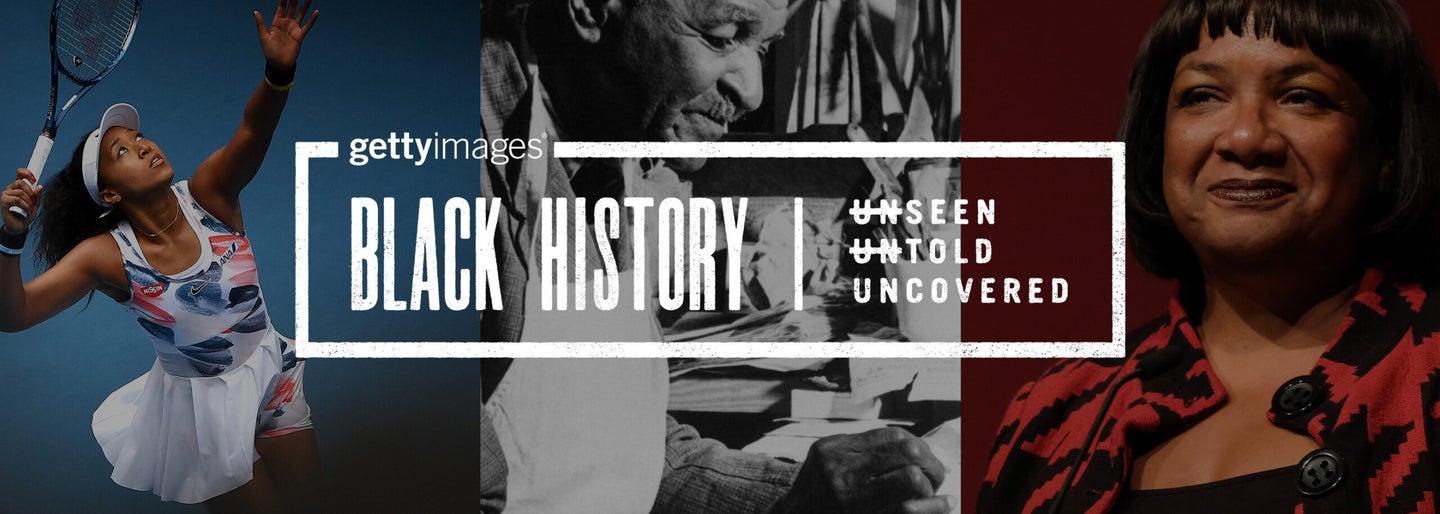Getty Images is releasing an archive of 30,000 images on the African & Black Diaspora
The Black History & Culture collection will be free for use in non-commercial and educational projects.

Duke Ellington leans over a piano. French colonial troops stand to attention during World War I. Abolitionists, cricket teams, Malcom X, The Jackson 5, a Dior runway show. These images are among the tens of thousands covering over 200 years of Black and African people, places, and events in Getty Images’ new Black History & Culture Collection.
“We acknowledge that the historically dominant cultural structures that have built the photography industry and archives have been grounded in white supremacy dating back to the 19th century and beyond,” the agency shared on the initiative’s website. “This being the case, the Black experience has been often framed from a white gaze, informed by the ideology of white superiority, and associated structural racism. Utilize this collection of rarely seen photographs to enhance and highlight untold stories from the past.”
Getty Images launched the Black History & Culture Collection with the input of historians and educators, including Dr. Deborah Willis of the NYU Tisch School of the Arts, Jina DuVernay of Clark Atlanta University, and Renée Mussai of the British arts agency Autograph. It is a compilation of roughly 30,000 assets covering many aspects of the African/Black diaspora from the 1800s onward.

Related: How Getty’s Olympics photos are shot, edited, and sent into the world in just two minutes
Who is the Black History & Culture Collection for?
The Black History & Culture Collection is freely available for non-commercial projects that further the education of the African/Black diaspora.
“The Black History & Culture Collection was created for non-commercial use to build on existing educational materials, paving the way for a deeper understanding of Black History,” Getty Images writes.
From Serena Williams and Booker T. Washington to the Tuskegee Institute and a West Indies cricket match, the collection takes users through the decades. Those searching for something in particular can sort the findings by categories, which include Black British Culture, entrepreneurship, families, Civil Rights, science and technology, and fashion, just to name a few.
“Everything is not there, however there is sufficient material to begin a process of reordering how we tell stories, why we tell stories. The availability of new content representing black bodies, representing black spaces, representing black history across waters shows that even black people have been part of our history,” says the University of Pennsylvania’s Dr. Tukufu Zuberi, whose specialty is sociology and race relations. Dr. Zuberi helped curate the collection.
How does it work?
The Black History & Culture Collection consists of content exclusively owned by Getty Images. The agency maintains that the repository is by no means exhaustive, but that it is starting with these assets because it owns the rights and can therefore provide them free of charge.
This excludes content from partners who make their photos available on the platform, but the agency expressed that the other component of this initiative is to fill the gaps in the imagery. It hopes that partners will join it in the endeavor. Those in possession of Black historical content and who wish to contribute can contact the agency.
For those who wish to use the assets in a project, they can request up to 500 images by filling out a request form. The content is free to use as long as it is non-commercial, but once a project moves into the commercial realm (including advertising and broadcasting fees), the images will need to be licensed.
